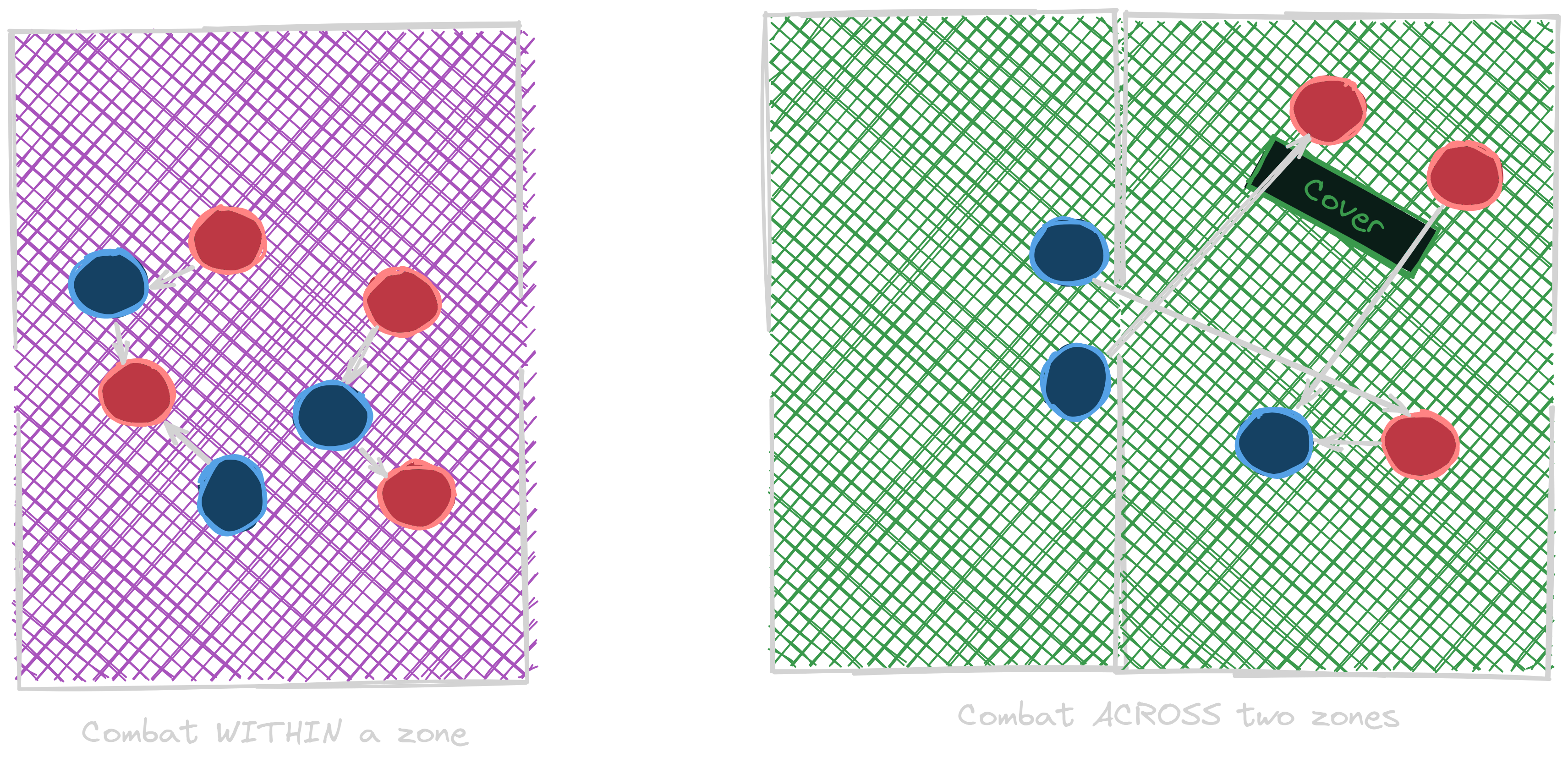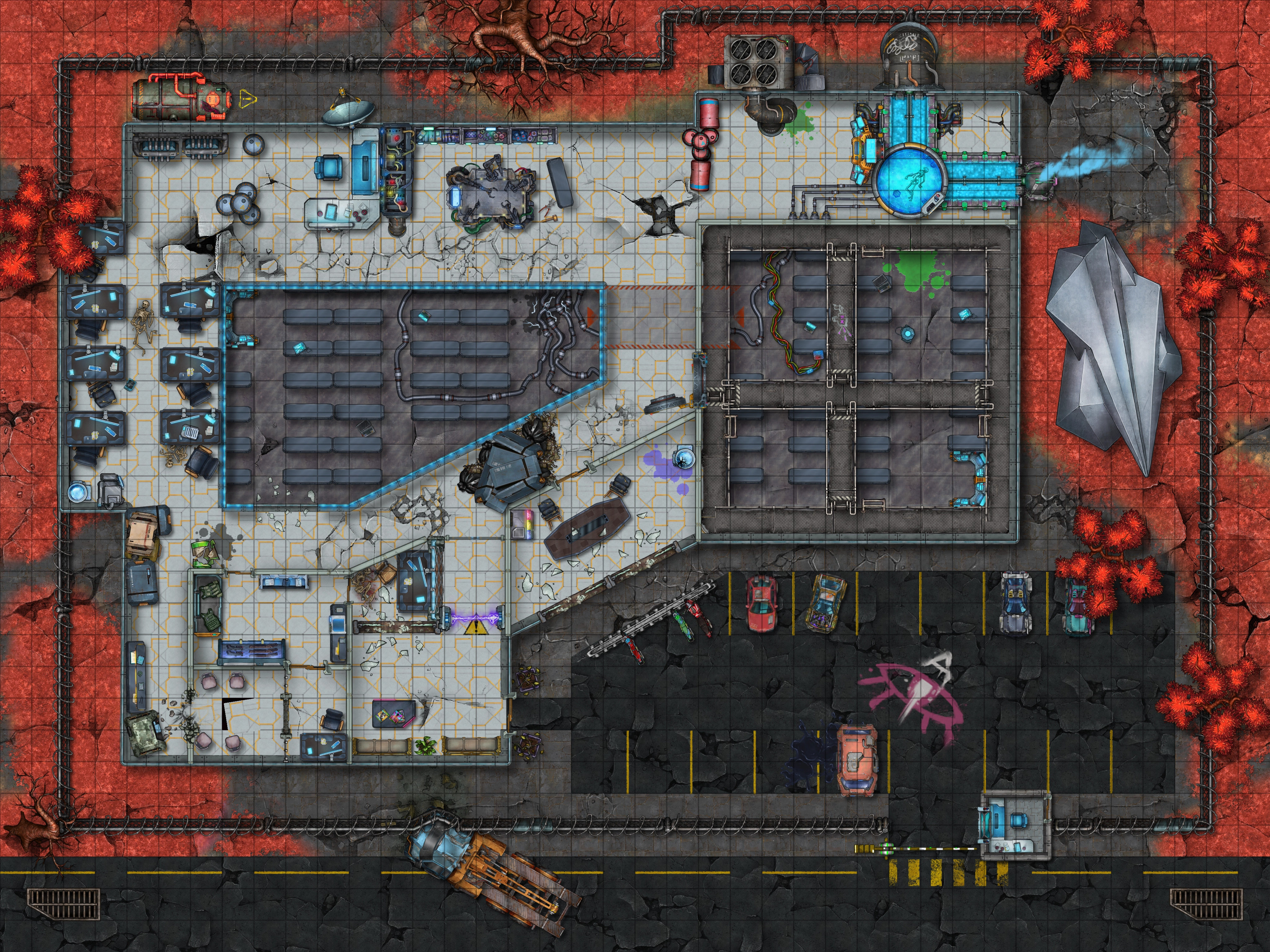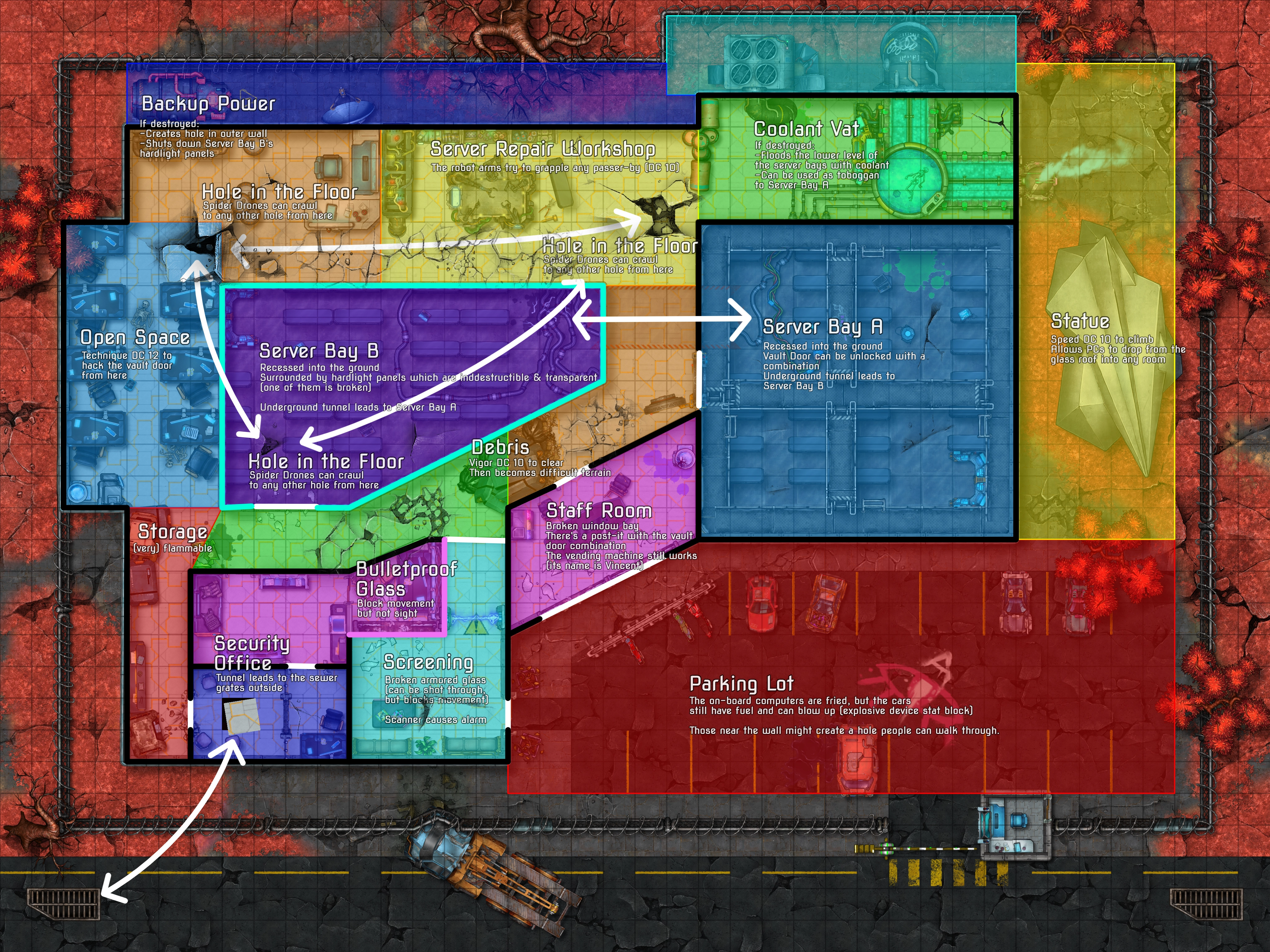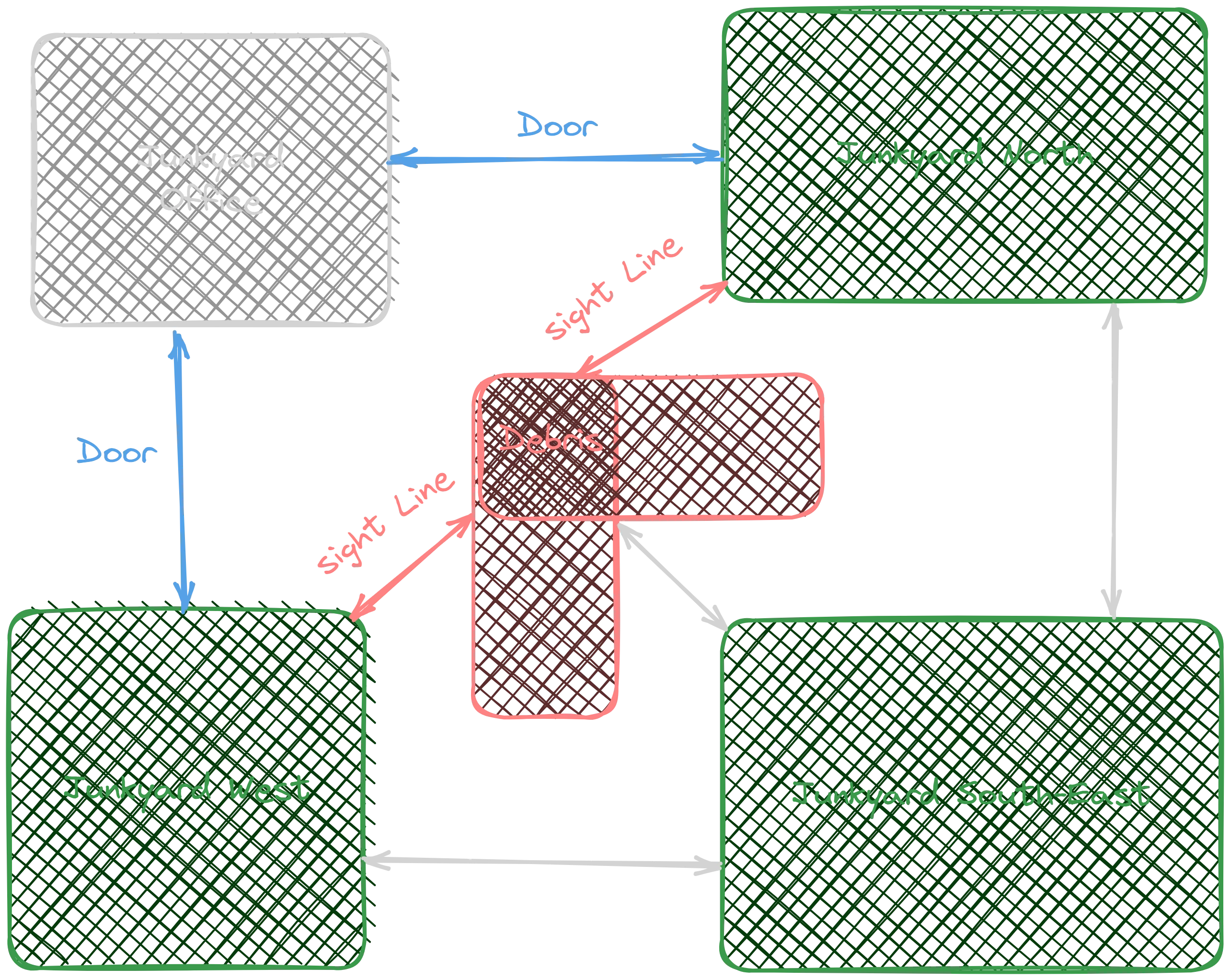Warning: Pre-Alpha
This game is currently in pre-alpha, and at this time, I do not recommend running a game in it yet. Every single game mechanic and piece of lore is subject to potentially breaking changes.
Thank you for your interest in this game! You can follow its development at https://www.youtube.com/@trekiros
-Trek
Designing Tactical Battlemaps
A good map can be the difference between a combat scene that your players forget in two weeks, and one that they'll talk about for the next several years. This section will help you design great maps for tactical combat.
Thinking Abstractly. The concepts of "zones" and "connections" presented below are purely mental frameworks to help you, the Plot Twister, create interesting combat situations for your players - there are no game mechanics tied to them (no player or monster ability that say "you can move through a one-way connection from the wrong side" or "one ally within an adjacent zone regains 2 hit points").
Interesting Connections
In this post-apocalyptic world, most combat involves long-range firearms. This means that usually, combat happens between two adjacent zones, rather than within a single zone.

For this reason, the first thing when designing a map is to think about the connections between the different zones in your map. A good map will include 3 to 5 different types of connections. Here is a table with examples of different types of connections for you to use:
| 1d12 | Connection Type | Description | Examples |
|---|---|---|---|
| 1 | Path | The connection doesn't block movement nor sight | Open field, corridor, fragile glass panes |
| 2 | Sight Line | This connection blocks movement, but not sight | Cliff, wire fence, peep hole |
| 3 | Obstruction | This connection blocks sight, but not movement | Light foliage, fog, curtain |
| 4 | Openable | The connection initially blocks movement and sight, but can be opened | Fragile wall, dense foliage, pile of debris, door |
| 5 | Closeable | The connection can be closed to block both movement and sight | Damaged ceiling, rope bridge, door |
| 6 | Bottleneck | If a creature is present here, it blocks movement through this connection | Door, rope bridge, metal beam |
| 7 | One-Way | Movement is only possible in one direction through this connection | Steep slope, hole in the floor |
| 8 | One-Use | After a creature uses this connection once, the connection is closed | Crumbling floor, falling ladder, boulder which causes a landslide |
| 9 | Hurtful | A creature which uses this connection takes damage | Fire, chemical leak, a large vertical drop |
| 10 | Restricted | Only certain creatures can move through this connection | Narrow crawlspace, automatic doors with an ID card scanner, ladder which animals can't use |
| 11 | Hidden | This connection is initially unknown to invaders | Dense foliage, path behind a waterfall, overgrown hatch, etc... |
| 12 | Changing | This connection can be rotated/activated to link different zones than it currently does | Crane, vehicle, hardlight bridge |
A single connection can have multiple properties from the examples above. For example, a door is typically an openable and closeable bottleneck.
If even one property is different between two connections, they are considered to be different types of connections. For example, a single location could have doors with the properties listed above, and broken doors that aren't closable - that one difference is enough for the players to feel like these are two meaningfully distinct types of connections.
Lanes & Differentiation. Mentally dividing the combat area into zones can help you reason about whether or not your players are given some interesting tactical choices. A good map will ensure players always have at least 2 choices for moving towards their enemies. And ideally, these choices should feel meaningfully different, because the zones they lead to have different types of connections.
Granularity. The concept of a zone can cover anything from zones within a single room, to rooms of a building, to different open areas in the wilderness. Player characters should be able to move from one zone to the next within a single turn, so they should be between 5 and 20 meters apart. So long as this is true, use whichever level of granularity makes most sense for you and for the current scene.

Interesting Zones
TODO
Example Battlemap
Below is a battlemap of a ruined data center that shows the design principles explained here. A perfect location to scavenge an important Nano Chip with some highly confidential data on it, and fight a swarm of Spider Drones and a Security Assembly!


Note: level of detail
This game is designed to be playable with or without detailed maps. If you lack the time to prepare beautifully detailed maps, or your group prefers having adventures in the theater of the mind, this game can just as easily be played using simplified, abstract maps such as this one:

When working with an abstract map, to keep the tracking of distances simple, you can use the following abstraction:
- Adjacent zones are considered to be 5m apart, unless specified otherwise.
- Within a given zone, creatures form groups where all members of that group are considered to be in melee range of one another. When you enter a zone, you create a new group where you are the only member. Joining or leaving a group within your zone costs 3m of movement.
- If you use an area of effect attack, choose up to two groups within a given zone: the attack hits all members of those groups.